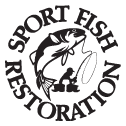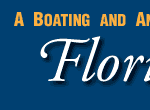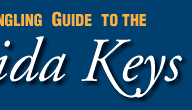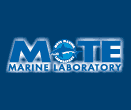CONTACT US:
Florida Fish and Wildlife
Conservation Commission
Fish and Wildlife
Research Institute
100 Eighth Avenue SE
St. Petersburg, Florida 33701
727-896-8626
|
|
|
Mote Marine Laboratory
Tropical Research Laboratory
24244 Overseas Hwy.
Summerland Key, FL 33042
305-745-2729
|
|
|

|
|
This project was funded in part by a grant awarded from Mote Marine Laboratory's Protect Our Reefs Grants Program, which is funded by proceeds from the sale of the Protect Our Reefs specialty license plate. Learn more at .
|

|
|
Additional funding for this project was obtained through the Federal Aid in Sport Fish Restoration Fund.
|
|
|
 |

|
Welcome to the Florida Keys, a 158 mile-long string of islands extending south and west of the Florida mainland from Key Largo to the Dry Tortugas. The Keys are home to North America’s only coral fringing reef. This natural wonder, the third-longest coral barrier reef in the world, lies about six miles seaward of the Florida Keys and stretches over 200 miles from Biscayne Bay to the Dry Tortugas. Several hundred species of fish and corals can be found within this expanse of reefs, bays, lakes, mangroves, and beaches that compose this delicate and unique ecosystem.
If traveling by car to the Keys you may suddenly find yourself on a two-lane road heading right through pristine wilderness. You are on the fabled 18-mile stretch. No side traffic, no development here. View this passage as a metamorphosis between the raucous hubbub of the mainland and the tranquil laid-back atmosphere of the fabulous Florida Keys: land of fishing, sailing and conch fritters. If you are traveling by boat, you may note that the water becomes clearer and that the bottom is alive with varied species of plants and animals.
The Keys are divided by both geography and demography into three distinct units: Upper Keys, Middle Keys, and Lower Keys. You have entered a marine-oriented environment like none other. Boats, marinas, and marine-related activities are everywhere. In recognition of this important environment, the Florida Keys National Marine Sanctuary (FKNMS) was created in 1990. The sanctuary encompasses 2,900 square nautical miles on both sides of the Florida Keys. Management in these state and federal waters is achieved through a cooperative agreement with the State of Florida Department of Environmental Protection and the National Oceanic and Atmospheric Administration (NOAA).
Enjoy the riches of the Florida Keys, and help protect them for others by practicing safe boating skills.
|
The interactive Boating and Angling Guide to the Florida Keys Web site was created to complement the printed Boating and Angling Guides to the Upper, Middle, and Lower Keys. To access the features of this Web site, please select one of the subject headings to the left or click on the icon below.
|

|
This Web site was last updated on August 27, 2013.
|
If you have any questions, comments, or suggestions about this Web site, please e-mail us at Boating_Guides@MyFWC.com.
Would you like to receive notices of changes to this Web site and the Boating and Angling Guides to the Upper, Middle and Lower Keys? If so, please e-mail us and include SUBSCRIBE-KEYS in the subject line.
Photo credits: Black skimmer © Bryon Chamberlin, Sunshine Skyway Bridge © Chris Anderson, Angler with red drum © OsbornePhotography.com, Mangrove prop roots © Chris Anderson
|



















